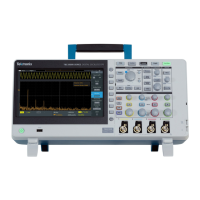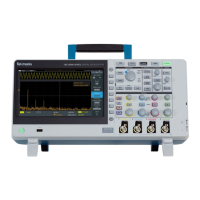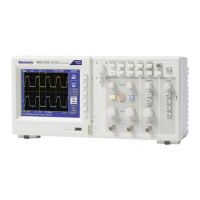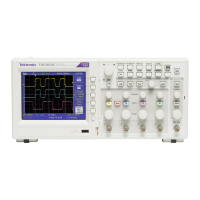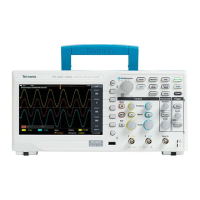Normal trigger mode
Normal mode sets the oscilloscope to acquire a waveform only when a trigger
condition occurs. If no trigger occurs, the last waveform record acquired remains
on the display. If no last waveform exists, no waveform is displayed.
Holdoff trigger mode
The Holdoff trigger mode lets you set a time period during which the
oscilloscope ignores trigger events. For example, to trigger on the first pulse of a
pulse burst, you would set the trigger conditions to trigger on a positive edge, and
set the holdoff value so that the trigger is disabled for a period of time after the
trigger event but before the next bust occurs. Using Holdoff in this case prevents
the oscilloscope from triggering on any positive signal edge.
Use Set Holdoff to minimum to set the holdoff value to the minimum value.
NOTE. The trigger mode does not set the trigger conditions; those are set with the
trigger Type controls. See Available trigger types on page 44.
Trigger delay acquisition mode
In normal acquisition modes, the trigger point is located at the center of the
waveform record, and is positioned at the center-screen expansion point so that
horizontal scale changes are centered around the trigger point. The Delay
function in the Acquire menu disconnects the trigger point from the center-
screen expansion point. This feature lets you use the Horizontal Position knob to
reposition (delay) the trigger point from the expansion point by a specified
amount.
The most common use for Delay is to acquire and display waveform detail that is
separated after the trigger event by a significant interval of time. For example,
you can trigger on a pulse that occurs once every 10 ms and then use Delay to
look at the signal characteristics that occur 6 ms after the trigger point.
Oscilloscope concepts
46 TBS2000B Series Oscilloscopes User Manual

